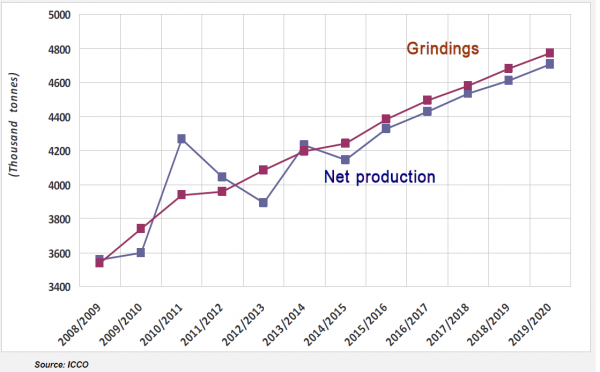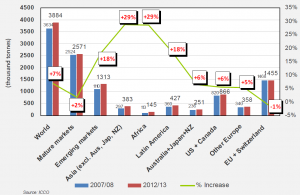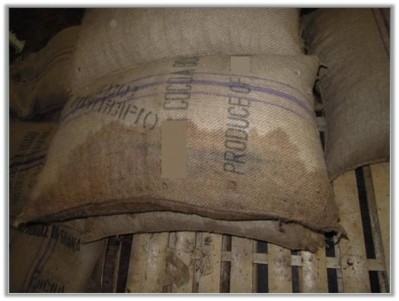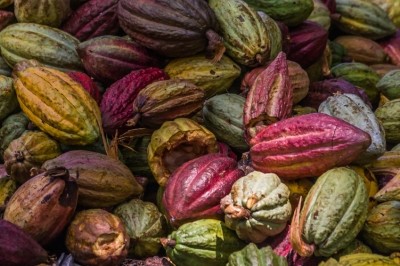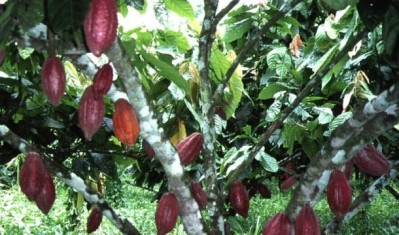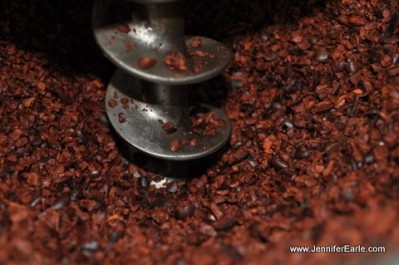Chocolate shortage ‘overstated in the extreme’, says ICCO
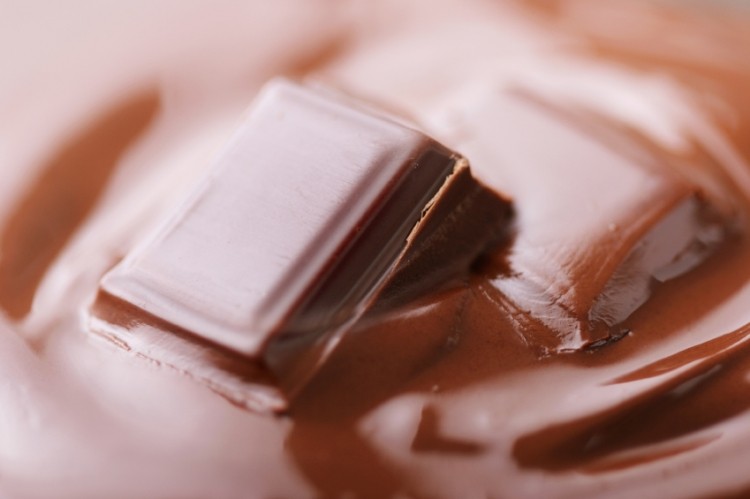
Around 2010, industry players such as Mars, Barry Callebaut and Blommer Chocolate, came together to predict a cocoa shortfall of 1m metric tons (MT) by 2020.
A Bloomberg article last week drew attention to the earlier forecasts, leading to a flurry of media reports about an impending chocolate shortage.
On Friday, The ICCO issued a statement that said its own projections fell short of such fears, which it said were “overstated in the extreme”.
Cocoa stocks sufficient
“There is no threat to the supply of cocoa for chocolate manufacture,” said the organization in a statement.
“There has been a tight relationship between supply and demand over the years and, while our projections show that supply deficits are likely to occur during the next several years, stocks of cocoa beans should cushion this development before production growth accelerates.”
The ICCO has projected a 40,000 metric ton (MT) surplus for 2013/14. It expects small deficits over the next five years and a shortfall of 100,000 MT in 2020, rather than a 1m MT deficit.
Deficits projections come as production is threatened by pests and diseases and a low income, aging farming population that can lack training in good agricultural practices. In conjunction, demand for chocolate is rising in Asia and Latin America due to increasing affluence, while cocoa is also progressively being used in other food applications.
In its Quarterly Bulletin of Cocoa Statistics, released in August, the ICCO estimated end of season stocks for 2013/14 of 1.66m MT due to cocoa leftover from previous seasons.
“As far as the ICCO’s current projections are concerned, there is no immediate cause for concern about the supply of cocoa for the next five years,” it said on Friday.
World's largest chocolate maker retracts 1m MT deficit
Speaking to ConfectioneryNews shortly after the publication of the original version of this article, Barry Callebaut's head of media relations Raphael Wermuth said that press reports had misinterpreted a Barry Callebaut press release. He said that Barry Callebaut no longer expected the shortfall for 2020 that it envisaged four years ago.
"We currently think that there will not be a 1m MT deficit in 2020. We still think there is going to be a gap but assume it will be a lot less."
Wermuth said that Barry Callebaut's latest forecast took account of sustainability initiatives that had begun to gain traction.
For own purposes or draw attention to complex issues?
Jean-Marc Anga, executive director of the International Cocoa organization (ICCO), said during a press conference at the World Cocoa Conference in June: “Sometimes the industry may be tempted to amplify the prospect of a supply deficit for its own purpose.”
Mars was among the first to predict a 1m MT cocoa shortfall by 2020. Andy Harner, global cocoa vice president at Mars Chocolate previously told this site that his firm chose to communicate the figure to draw attention to rising chocolate consumption from middle classes in emerging markets and competition for arable land. He told us earlier this year that Mars stood by the figure.
The deficit pendulum
The ICCO’s statement said that over the past 10 years, the cocoa market had experienced five years of production surplus and five years of deficit.
It said that in the last season, 2013/14, the two largest producing nations Côte d’Ivoire and Ghana, each posting record production.
It added that cocoa prices were also below historical median levels recorded between 1850 and 2014 in real terms, adjusted for inflation.
Wholesale chocolate price hikes
Chocolate manufacturers such as Hershey, Mondelēz, Mars Chocolate North America, Nestlé and Cloetta have raised wholesale chocolate prices in response to more recent cocoa price increase and pressure from other rising commodity prices such as hazelnuts.
According to Euromonitor International, cocoa accounted for 14% of manufacturing costs for a 100 g chocolate bar in May 2014, with the bulk of costs coming from processing.
Average cocoa prices for October 2014 were up 13.6% to $3,101 per MT compared to the same period last year, according to the ICCO’s monthly averages of daily prices. However, the October average was 3.7% lower than the previous month.
The ICCO said it would continue to monitor the situation. “In the meantime, it believes that there is no cause for alarm regarding the availability of chocolate for consumers to enjoy,” said its statement.
